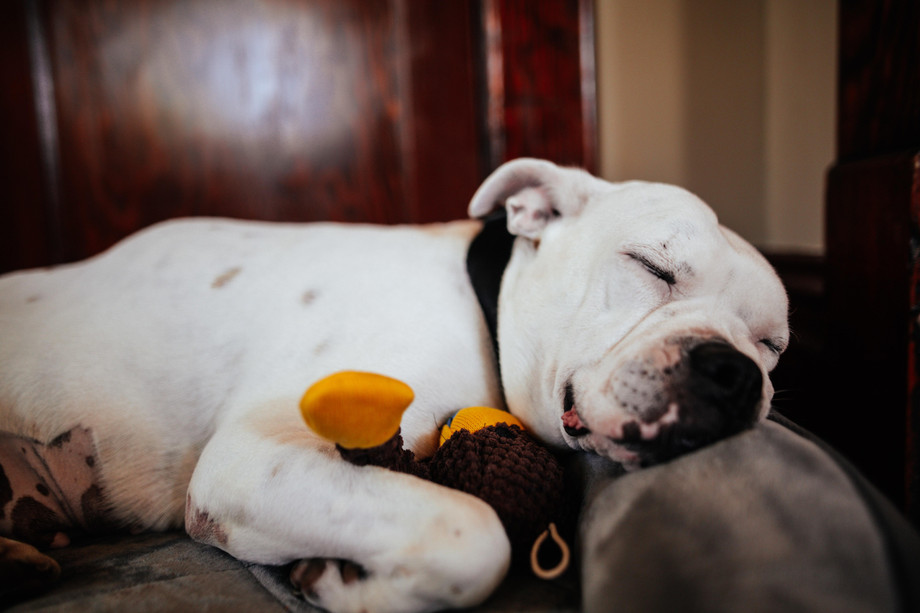Introduction:
Bringing a rescue pet into your home is a significant and transformative event for you and your new furry companion. While providing a safe and loving environment is paramount, ensuring your rescue pet feels comfortable and secure in their new surroundings is equally essential. Helping them acclimate to their new environment is a gradual process that requires patience, empathy, and thoughtful preparation.
This article will explore strategies and practical tips for making your rescue pet feel at ease in their new home. From creating a calming space to establishing routines and building trust, we'll provide guidance to help you navigate this transition and foster a strong bond with your furry friend.
Setting the Stage: Creating a Calming Space
A crucial first step in making your rescue pet comfortable is to provide them with a designated safe space. This space can be a quiet room or a cozy corner in your home where they can retreat when feeling overwhelmed or anxious. Fill their space with comfortable bedding, toys, and familiar and favorite scents, such as blankets or items from their previous environment, offering a sense of security and familiarity.
Gradual Introductions and Slow Exploration: Fostering Harmony Among Pets
Introducing a rescue pet to your existing furry companions can be an exciting and rewarding experience. To ensure a smooth transition and promote harmonious relationships, gradual introductions, and slow exploration are key. Start by creating a separate space for the new pet, allowing them to become familiar with their surroundings at their own pace. Gradually expand their access to other areas of the home as they grow more comfortable. This gradual approach helps prevent overwhelming situations and reduces the chance of conflicts between pets.
Providing hiding spots and safe spaces for each pet allows them to observe and interact with one another on their terms. Patience and positive reinforcement are vital during this process, as pets need time to establish trust and develop bonds. Facilitating gradual introductions and encouraging slow exploration lays the foundation for a harmonious and joyful coexistence among your beloved rescue pet and other furry companions.
Establishing Routines and Predictability
Creating a consistent daily routine is essential for your rescue pet's sense of security. Establish regular feeding times, exercise sessions, and playtime. Consistency and predictability help them understand what to expect, reducing anxiety and creating a sense of stability. Additionally, maintain a consistent sleep schedule and designate quiet hours to ensure your pet gets the rest they need.
Building Trust Through Patience and Positive Reinforcement
Patience and positive reinforcement are essential to building trust with your rescue pet. Allow them to approach you on their terms and avoid forcing interactions. Use treats, praise, and gentle encouragement to reward desired behaviors, gradually building trust and confidence. It's important to remember that each rescue pet has unique past experiences so progress may take time. Be understanding and respect their boundaries as they gradually open up to you.
Providing Mental and Physical Stimulation
Enrichment activities play a vital role in keeping your rescue pet mentally stimulated and physically active. Offer puzzle toys and interactive feeders, and engage in play sessions to provide mental challenges and alleviate boredom. Regular exercise, walks, and playtime sessions tailored to your pet's needs help expend energy and improve their overall well-being.
Seeking Professional Guidance
If you encounter challenges or behavior concerns while helping your rescue pet adjust, don't hesitate to seek professional guidance from a veterinarian or animal behaviorist. They can provide specialized advice and techniques tailored to your pet's specific needs, ensuring a smooth transition and addressing any underlying issues.
Conclusion:
Creating a comfortable environment for your rescue pet goes beyond providing physical comfort. It is also about showering them with love, compassion, and understanding. Be their advocate and champion, giving them a sense of security and belonging. Spend quality time together, engaging in activities that strengthen your bond. Whether it's gentle grooming sessions, quiet cuddles, or interactive playtime, these moments of connection foster trust and deepen your relationship.
As you navigate the journey of making your rescue pet comfortable, remember that your presence and reassurance can make a world of difference. Your calm and patient demeanor will help them feel at ease, knowing they are in a safe and caring environment. Offer gentle guidance and consistent boundaries, giving them a sense of structure and stability.
Lastly, take into account the power of your love and affection. Your rescue pet may have had a complicated past, but by opening your heart and home to them, you give them a second chance at happiness. The transformation you witness as they settle in and flourish is a testament to the resilience of these remarkable animals and the incredible impact that a loving home can have.
In conclusion, making your rescue pet comfortable in their new environment is a journey that requires time, patience, and a proactive approach. By creating a calming space, establishing routines, building trust, providing mental and physical stimulation, and showering them with love, you can help your rescue pet feel secure, loved, and truly at home. Embrace the challenges and celebrate every milestone, knowing you are making a positive difference in their lives. Together, you and your rescue pet are embarking on an incredible adventure filled with companionship, joy, and endless moments of unconditional love.

